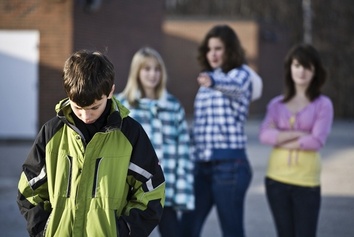
Baumeister, Campbell, Krueger, and Vohs (2004) mentioned self-esteem is constantly viewed as a communal problem for Americans, who tend to worry that lack or insufficient self-esteem leads to a life with various undesirable behaviors. Prof. Baumeister (1996) challenged that bullies in fact, hold favorable and perhaps inflated views of themselves. He also reviewed several empirical studies on how murderers and rapists respond to self-defining statements, he pointed out that these individuals firmly believe they are superior, not inferior. However, here I would like to argue that when answering these type questions people tend to go for what they think is the right answer and/or provide with information they would like to read and believe about themselves.
Allen (2006) exposed the increase in bullies and victims from 1984 and 2001 by comparing two studies. First she analyzed Olweus (1984) first large-scale study of bullying, although he only focused at bullying only among boys, there might be a minimal but still considerable difference in the last numbers. She concluded that from Olweus’s original research (based on the 1983-84 school year) found that the main players in bullying comprised about 15 percent of the student population. She compared those findings with a study published in the Journal of the American Medical Association in April of 2001 (Nansel et al.), which included 15,686 students in grades 6-10. The results, when compared with Olweus’s, showed a significant increase in the numbers of bullies and bully-victims, with only a slight change in the percentage of victims:
| Olweus 1984 bullies – 6% victims – 9% bully-victims – 1.6% | Nansel et al. 2001 bullies – 13% victims – 10.6% bully-victims – 6.3% |
Statement of the Problem
Bullying affects people of all ages, ethnic backgrounds, socioeconomic levels, and all demographic areas. It is important to develop a deeper understanding of the problem in order to provide better solutions. However, I think bullying is like any other problem, not attacked in the proper way. Bullying is clearly seen as a major problem in our society but there are lacks in studies of the good traits a bully might bring to the table. My decision in a longer term is not to stop bullying but work with them to identify what fields they should go to. By halting bullies we are only damaging them as well instead, we should seek a solution that benefits everyone.
Conclusion
A student is being bullied when he or she is “exposed, repeatedly and over time,” to abuse or harassment by one or more other students (Olweus, 1996). Basically, the main goal of the bully is to gain power over and dominate other individuals. However, is there a specific reason why someone needs to show dominance against another human being? I think learning about them and where they come from, the environment they grew up in would completely change the panorama of how the bully-victim occurs. Recognizing that these children who have been labeled bullies are most likely victims of bullying as well is an important factor for more effective interventions. Ross (2002) summarizes a study that was done in Finland explaining that during their adolescent years bullies are just as likely to be at risk for depression, low self-esteem as victims and when bullies are controlled it is bullies who have higher ratings of low self-esteem, depression, and further internal problems, concluding that they are more like victims than previously believed.
By Hector Quintanilla 2013
References:
Allen, K (2006). Bullying and Self-esteem: is there a connections? Impact Training, Inc.
Olweus, D. (1993). Bullying at school: What we know and what we can do. Cambridge,MA: Blackwell.
Ross, D. (2002). Bullying. In J. Sandoval (Ed.), Handbook of crisis counseling, intervention, and prevention in the schools (electronic version) 2nd ed. (pp. 105-135): Mahwah, NJ: L. Erlbaum Associates.
Sullivan, K., Cleary, M., & Sullivan, G. (2004). Bullying in secondary schools: What it looks like and how to manage it. London: Paul Chapman Publishing.

 RSS Feed
RSS Feed

